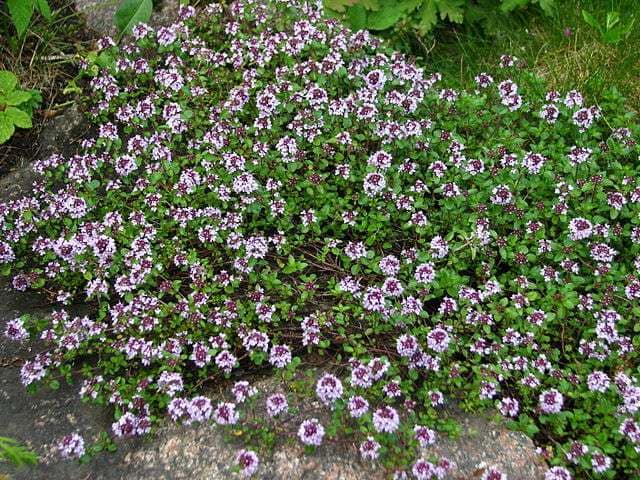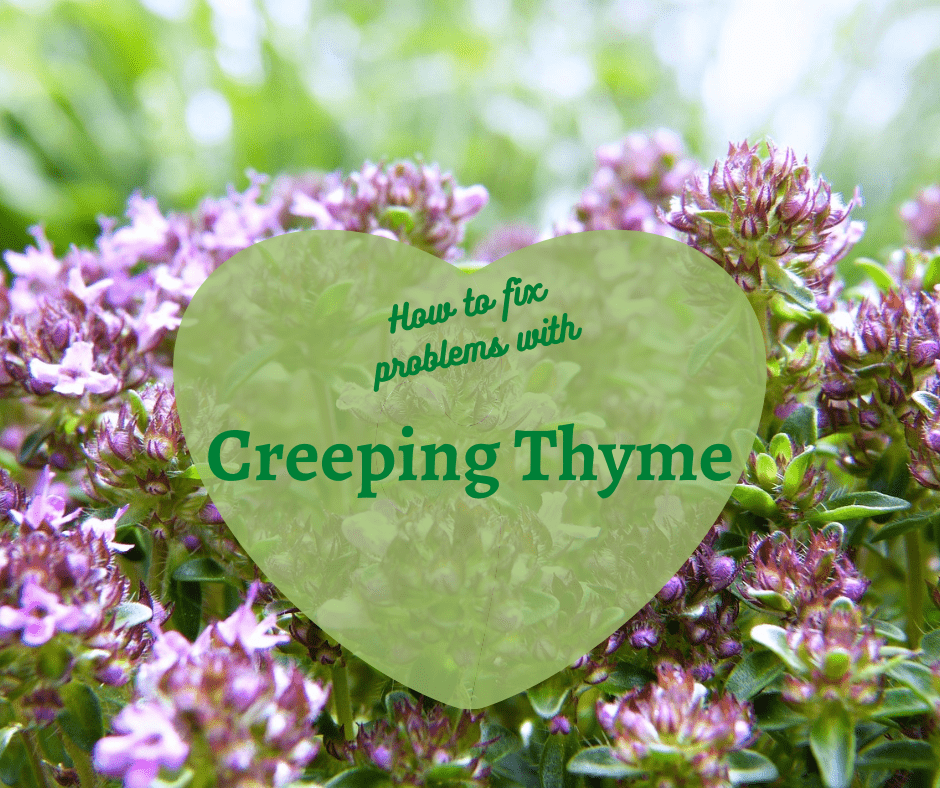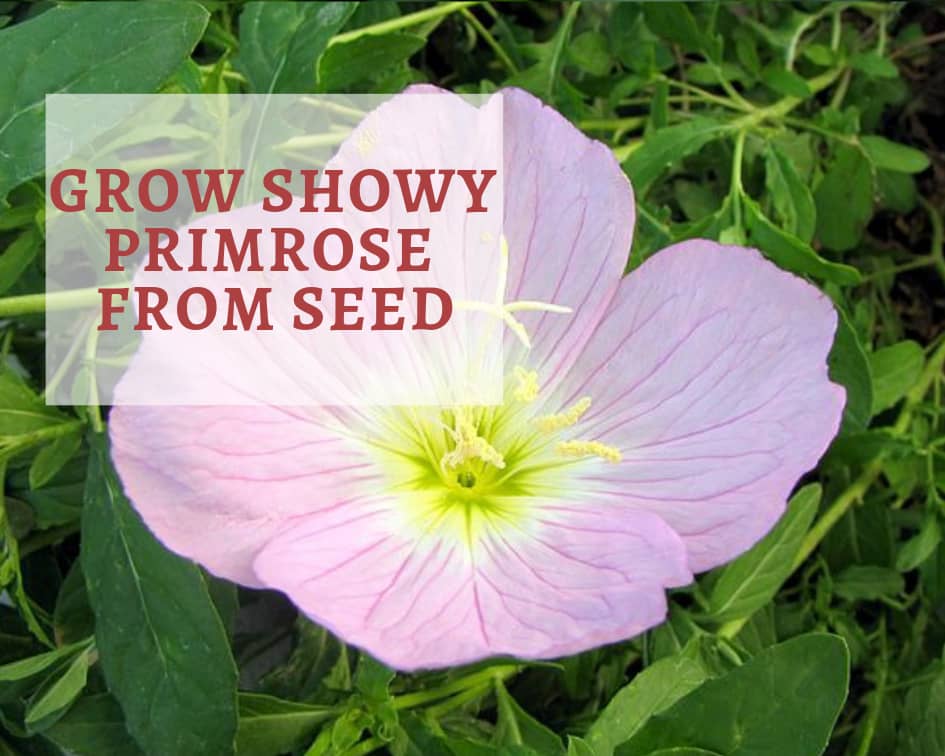This post may contain affiliate links. As an Amazon Associate we earn from qualifying purchases.
Creeping thyme (Thymus praecox) is gorgeous, but it is susceptible to a just a few minor problems. Read on to learn more.
The yank-out-your-lawn craze across the United States started a few years ago and shows no sign of abating.
If you’re just now getting around to it and need a grass replacement, consider creeping thyme. We love “Magic Carpet” thyme (Thymus serpyllum ‘Magic Carpet’). This creeping, aromatic perennial is drought-tolerant and boasts a moderate tolerance to foot traffic.
Hardy to U.S. Department of Agriculture plant hardiness zones 5 through 9 (find your growing zone here), ‘Magic Carpet’ thyme isn’t bothered by much, and what does ail it is easy to prevent or remedy.
Creeping Thyme Root Rot
Root rot is a fungal disease caused by a variety of conditions. When it occurs in creeping thyme it is typically because of overwatering or because the plant is growing in soil with a drainage problem.
Suspect root rot if the foliage wilts and turns yellow or if the plant appears to be dying. Diagnose the problem by pulling up some of the affected areas and checking the roots. Look for soft, mushy roots, those that are dark colored and the lack of white roots.
Root rot is challenging to treat and requires carefully digging up the infected parts of the thyme and disposing of them. Follow the removal with an application of a systemic fungicide with mono- and di-potassium salts of phosphorous as the active ingredient (see the Resources section below). Always follow label instructions and precautions.
As a general rule, use one-eighth teaspoon per gallon of water, mix the solution well and pour it over the remaining thyme. You will need 25 gallons to treat 100 square feet. Water the thyme as you normally do after applying the fungicide and repeat the application in one month.
Prevent root rot by ensuring that your creeping thyme is planted in well-drained soil and that you water it only when the top 1 to 2 inches of soil is dry.

Spider Mites on Creeping Thyme
So tiny that you need a magnifying glass to determine their features, spider mites, as their name implies, spin webs. They thrive in warm, dry weather and, when the weather cools, or it rains, they take shelter in debris on the soil.
Spider mites damage creeping thyme by sucking the juices from the foliage. Suspect a spider mite infestation if you notice webbing, light spots on leave or if the leaves are turning bronze.
Control mites with a solution containing 5 tablespoons of horticultural oil (see the Resources section, below) in one gallon of water. Pour the solution into a sprayer and spray the foliage until it is completely covered with the solution.
The best way to prevent spider mites on your creeping thyme is to water more frequently to cure dry conditions. Yet, keeping the soil too moist around the thyme may rot the roots. It’s best to wait to see if an infestation occurs rather than try to prevent one.
Note: Don’t apply the oil while the sun is shining on the plant as it may burn it. Wait until a cloudy day or apply at dusk and wash off at dawn.
Considering a new groundcover? Check out Showy Primrose and learn how to grow it from seed!
Resources
Monterey Garden Phos Fungicide (for root rot)
Monterey Horticultural Oil (to control spider mites and other pests)
Featured image by carmona rodriguez.cc, via flickr.com/CC BY-SA 2.0




